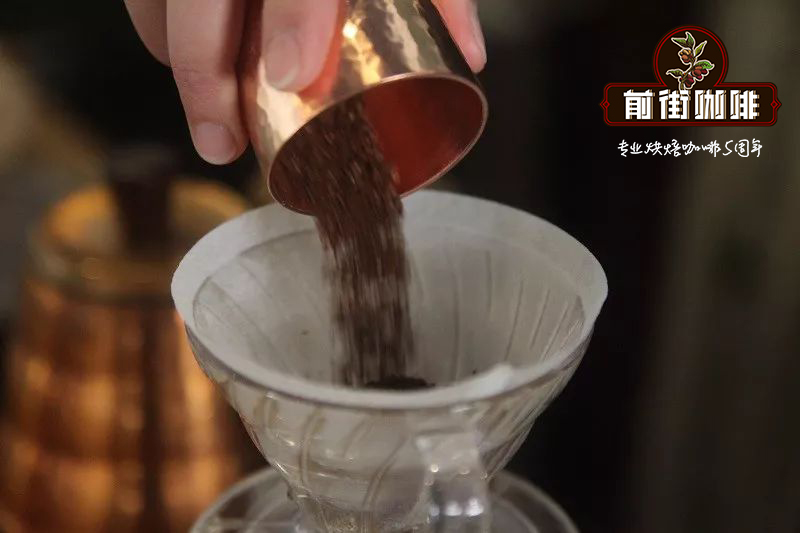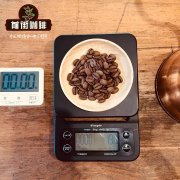Essel Coffee Bean Brand recommendation _ how to choose Ethiopian Coffee beans _ list of flavors of Ethiopian Coffee producing areas

Professional coffee knowledge exchange more coffee bean information please follow the coffee workshop (Wechat official account cafe_style)
The sixteenth-century Lebanese scholar Faustus Nairous Barlesius wrote in his book the Sleepless Monastery that the origin of coffee was discovered by shepherds living in the Ethiopian highlands in the sixth century.
● coffee starts here.-Ethiopia.
Africa-Ethiopia, known as the birthplace of coffee. Some people say that Ethiopia is the "Garden of Coffee Eden" and the place where Arabica coffee trees were first discovered. Coffee is grown almost everywhere in the country, with thousands or even tens of thousands of coffee varieties. So far, there are still many wild species growing in the mountains and forests that have not been discovered by researchers.
In this tropical country, about 15 million people are engaged in coffee production-related industries, of which about 1.1 million are coffee farmers. More than 90% of Ethiopia's farms or cooperatives are grown in small areas, and most of the coffee produced is traditional Arabica varieties. Coffee from the clothing country is recognized as a major producer of both quality and output in the world. The annual output of coffee is about 350000 tons, and more than 70% of it is exported to countries around the world, accounting for more than half of the GDP of the clothing country.
The flavor of ● Esser coffee bean producing area
Ethiopia is a world-famous producing area of boutique coffee beans, and because it is the birthplace of coffee, there are countless native varieties of coffee, which is a treasure in the hearts of many coffee lovers, making people faithfully follow its flavor.
In eastern Africa lies the vast Ethiopian plateau, which ranks sixth in the world in average altitude, so it is known as the "roof of Africa". In its territory, the East African Rift Valley runs through the central region, dividing it into east and west walls, while deserts and semi-deserts account for 28% of the territory, with many rivers and lakes, forming a diverse geographical environment and hydroclimate, so the coffee flavor of Ethiopia is not only multi-element, but also very rich.
Among them, the more well-known Ethiopian coffee bean producing areas are as follows:
Sidamo Sidamo
Flavor: flower aroma, cocoa, grape sweet rhyme
It is not only the main producing area of Ethiopian boutique coffee, but also the birthplace of sun treatment, where most sun-dried beans with both quality and flavor are produced. Because of its different soil composition, regional microclimate and numerous native coffee varieties, Sidamo has a diverse and unique flavor, moderate acidity and high quality, with an annual output of about 37000 tons.
Yirgacheffe Yegashev
Flavor: floral, caramel, lemon aroma
Located in Sidamo province, there is a coffee producing area with the highest average elevation in the country-Yegashev, which is one of the few washed Arabica coffee beans in Ethiopia. It is rated as the best coffee in Africa by the world, and is also known as "perfume coffee". The annual output is about 28000 tons.
Harra Hara
Flavor: fruity, cocoa, wine
This producing area is an ancient city in eastern Ethiopia, with a dry and comfortable climate and sun treatment. The main variety is Longberry Harrar, also known as Haramoka, which is the ancestor of mocha coffee. Due to the volcanic ash soil in the planting area, sufficient sunshine and great differences in climate and temperature, it has created a high-quality sour and sweet taste in the Haramoka flavor, with an annual output of about 26000 tons.
● Rose Summer / rumors of geisha origin
In fact, when it comes to the coffee variety Geisha, the first thing that comes to mind must be the award-winning coffee variety in the Best of Panama competition-geisha (also known as "Rose Summer"). Many people do not know what a rough life geisha had before coming to Panama and how many countries she had wandered.
Since its rise in 2004, the new star of the coffee industry, geisha, has attracted worldwide attention. It is said to have originated in the forests of the Yigi Mountains in Ethiopia. After United Nations botanists entered the mountains to sample bean seeds, it was transplanted to Kenya in 1932 for trial planting. Later, after several twists and turns in countries such as Tanzania and Costa Rica, it finally arrived in Panama and has become a coffee variety that has won numerous awards today. As a result, many people who have drunk geisha and Yegashev of Ethiopia always say that there are many similarities in their flavors.
The beauty of the original taste of ●
Coffee began in Ethiopia and developed its distinctive regional flavor from rich native coffee tree species after mixed and cultivated by environment, climate and man-made. In the third wave of coffee aesthetic trend, people advocate tasting the original flavor of coffee and reject sugar and milk and other harmful additives-just imagine, a cup of black coffee with flower and fruit aroma and caramel tail, when mixed with sugar milk and covered with aroma and taste, do you still think it is a good cup of coffee?
● Essel Coffee Bean brand recommendation
Qianjie Coffee freshly roasted single Essel beans-such as Yega Sheffield and Sidamo Coffee are fully guaranteed in brand and quality and are suitable for brewing in a variety of utensils. And more importantly, the performance-to-price ratio is extremely high, a bag of half a pound 227 grams, the price is only 70-90 yuan. According to the calculation of 200ml per cup of coffee and the ratio of powder to water at 1:15, 15 cups of fine coffee can be made in a bag, and each cup of coffee only costs about 5 or 6 yuan, which is very cost-effective for cafes to sell dozens of yuan a cup.
Qianjie coffee: Guangzhou bakery, the store is small but a variety of beans, you can find a variety of unknown beans, but also provide online store services. Https://shop104210103.taobao.com
Important Notice :
前街咖啡 FrontStreet Coffee has moved to new addredd:
FrontStreet Coffee Address: 315,Donghua East Road,GuangZhou
Tel:020 38364473
- Prev

Ethiopian coffee bean naming logic _ Ethiopian coffee classroom _ Ethiopian coffee how much is a cup of coffee
Professional coffee knowledge exchange more coffee bean information please follow the coffee workshop (Wechat official account cafe_style) Ethiopia is the birthplace of coffee, can start directly from the history of drinking. In 850, a shepherd in Ethiopia found that his goat became energetic after eating a certain fruit. When a group of hating couples learned about it, they felt bitter and disappointed when they ate it.
- Next

2018 Ethiopian Coffee Bean recommendation _ Ethiopian Coffee Bean description _ how much Ethiopian Coffee Bean
Professional coffee knowledge exchange more coffee bean information please follow the coffee workshop (Wechat official account cafe_style) ● descendants of King Solomon and Queen Sheba Ethiopians regard themselves as descendants of King Solomon and Queen Sheba, the lion is the symbol of power of their country, the country's population reached 102403196 in 2016, (12th in the world), is the world's most populous landlocked country
Related
- Detailed explanation of Jadeite planting Land in Panamanian Jadeite Manor introduction to the grading system of Jadeite competitive bidding, Red bid, Green bid and Rose Summer
- Story of Coffee planting in Brenka region of Costa Rica Stonehenge Manor anaerobic heavy honey treatment of flavor mouth
- What's on the barrel of Blue Mountain Coffee beans?
- Can American coffee also pull flowers? How to use hot American style to pull out a good-looking pattern?
- Can you make a cold extract with coffee beans? What is the right proportion for cold-extracted coffee formula?
- Indonesian PWN Gold Mandrine Coffee Origin Features Flavor How to Chong? Mandolin coffee is American.
- A brief introduction to the flavor characteristics of Brazilian yellow bourbon coffee beans
- What is the effect of different water quality on the flavor of cold-extracted coffee? What kind of water is best for brewing coffee?
- Why do you think of Rose Summer whenever you mention Panamanian coffee?
- Introduction to the characteristics of authentic blue mountain coffee bean producing areas? What is the CIB Coffee Authority in Jamaica?

